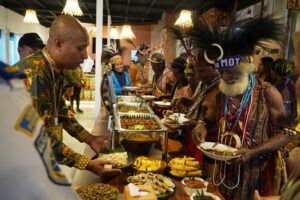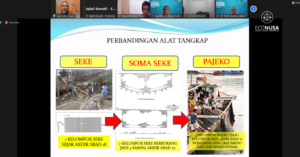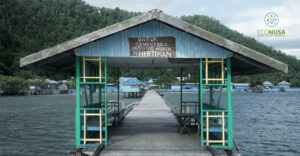The sun had yet to rise when the entire team gathered at EcoNusa’s Marine Station in Banda Naira. Each person was busy preparing their respective gear before setting sail for a full-day mission to install mooring buoys across three islands in the Banda Archipelago—Rhun, Manukang, and Hatta Islands.
At 3:30 AM local time, the boat departed for its first destination, Manukang Island. Also known as Suanggi Island, it’s one of the favorite diving spots for tourists visiting the Banda Islands. Here, visitors can enjoy the beauty and diversity of coral reef ecosystems. If you’re lucky, you might encounter rare and protected marine species such as the Humphead Wrasse or the Hammerhead Shark.
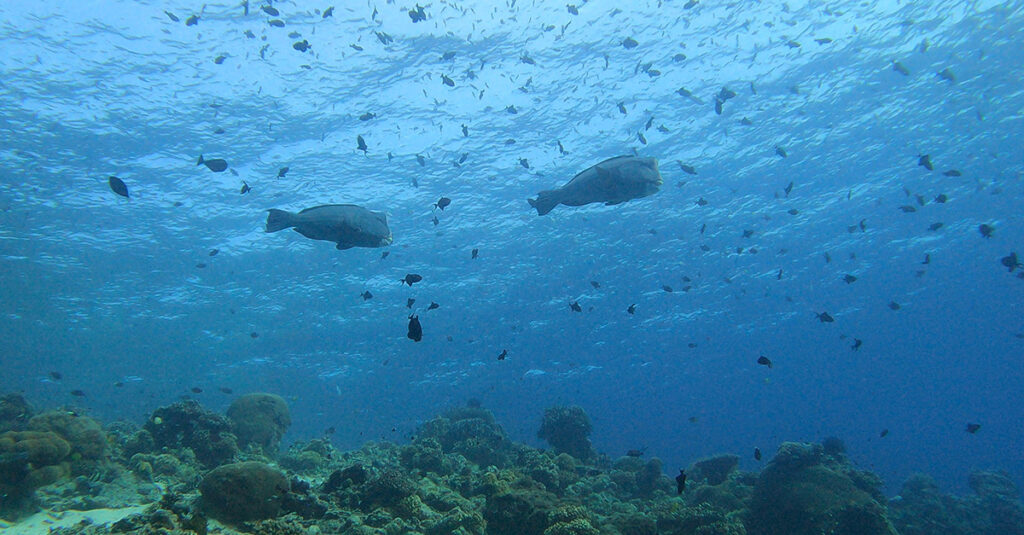
The trip from the EcoNusa Marine Station to Manukang Island takes about two hours. The Banda Islands in Central Maluku are not only historical witnesses to the global spice trade but also home to extraordinary marine biodiversity. The clarity of the seawater, biodiversity, and well-preserved coral reefs make this region a premier marine tourism destination in Indonesia. It’s no surprise that tour boats, especially Liveaboards (LoBs), often stop in Banda during their diving and marine exploration routes.
However, with the rise in tourism, pressures on the marine ecosystem have also grown. One of the biggest threats comes from anchoring practices. Anchors dropped into the sea can damage coral reefs and destroy the natural structures that attract visitors in the first place.
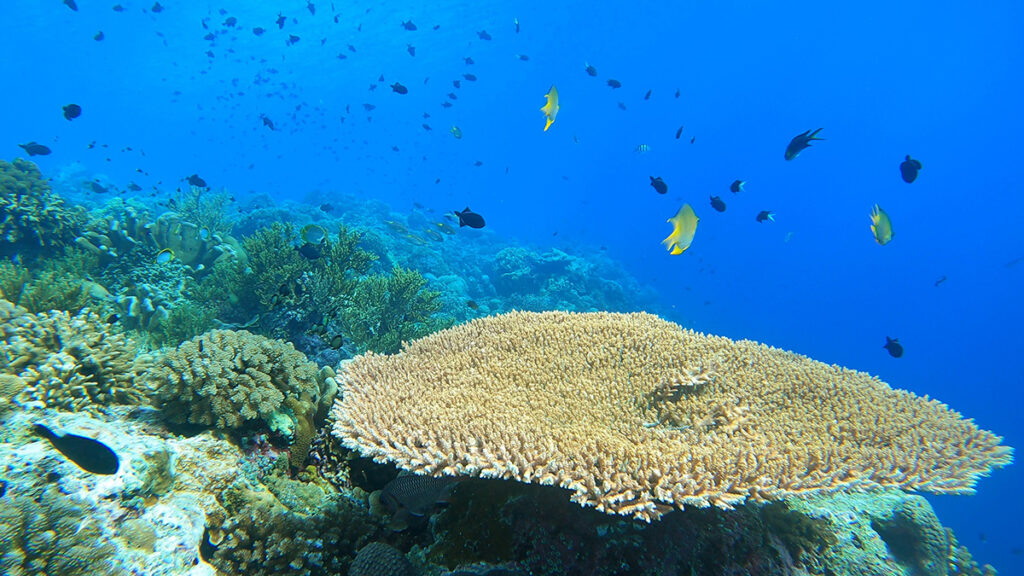
This situation sparked the idea of installing mooring buoys at popular tourist spots in the Banda Islands. Muhammad Yani Mau, Head of EcoNusa’s Marine Station in Banda, explained that the initiative was a multi-stakeholder collaboration between EcoNusa, Banda Naira University, Ocean Eye, the Banda Cultural Consortium, the PSDKP (Marine and Fisheries Resources Surveillance), local communities from the three islands, and tourism operators who rely on the sustainability of Banda’s waters.
“From the start, EcoNusa has been committed to conserving biodiversity, particularly in Eastern Indonesia, including Maluku and Papua. As one of our intervention areas, the Banda Islands must be protected. This initiative is the result of collaboration between tourism operators, conservation institutions, and academics who share a common goal: to preserve marine biodiversity in Banda,” said Yani on Sunday, April 27, 2025.
For the first phase, mooring buoys were installed at six locations across three main islands: Hatta, Manukang, and Rhun.
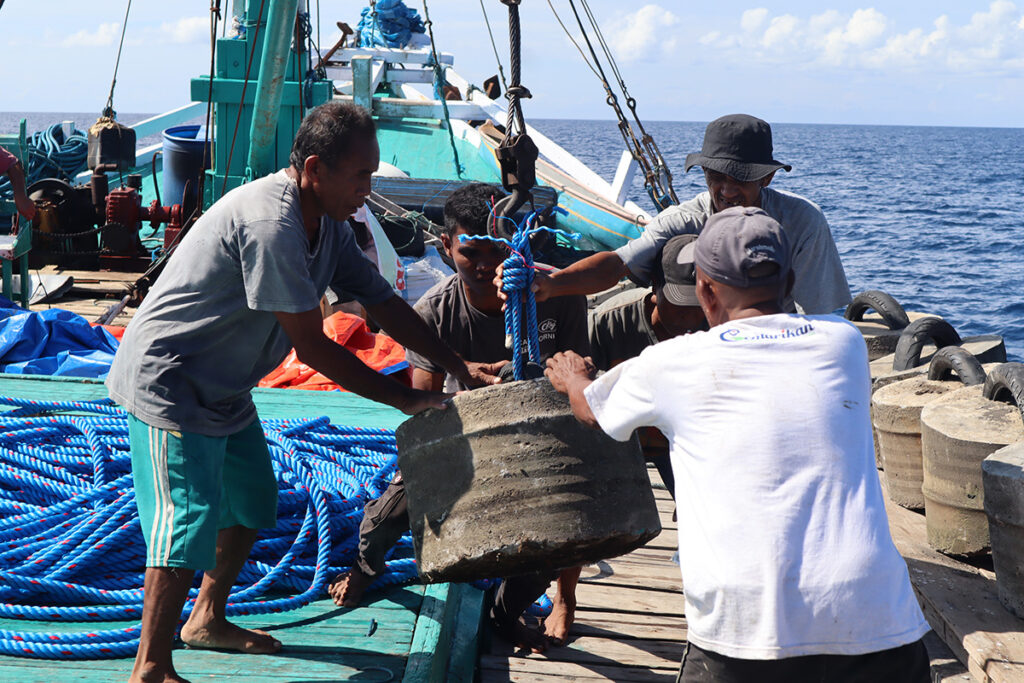
Budiono Senen, a representative from Banda Naira University who participated in the installation, stated that this was a tangible example of the collaboration needed in the Banda Islands. He added that the university helped recommend the most suitable types of mooring based on Banda’s underwater topography.
“We provided recommendations for the type of mooring suited to Banda’s seabed contours. The approach must be scientific to be effective and non-damaging. For now, the octopus-type mooring is the best fit for the agreed sites,” said Budi.
A mooring buoy is a large floating marker attached to an anchoring system on the seabed, usually placed in sandy areas or locations without coral. This system allows tour boats to dock without dropping anchors. Besides protecting marine ecosystems, it also speeds up and simplifies docking—especially in popular diving and snorkeling areas.
Hatta Island was one of the selected locations for this first phase. Two mooring points were installed here: one near the village and another in Sekaru Hatta, a popular tourist spot during the holiday season.
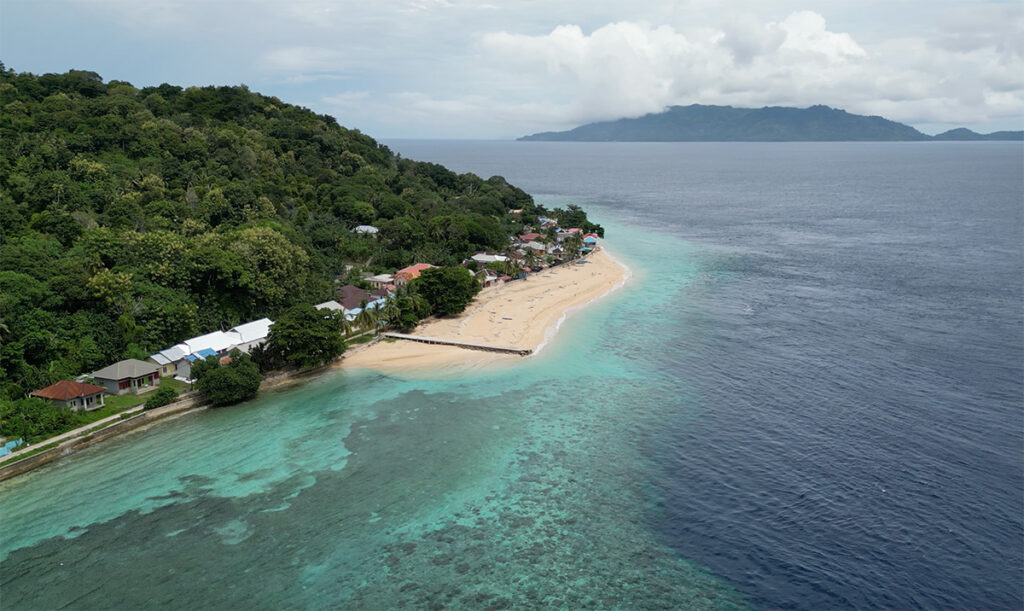
Sudar Raharusun, the village leader of Hatta Island, expressed his gratitude and appreciation for the mooring installation. According to him, this is the first time moorings have been installed on the island.
“We truly appreciate this installation. It’s the first of its kind in Hatta. We’re ready to take care of it and hope more will be installed in the future, especially since the island gets very busy during the high season,” said Sudar.
The tourism sector in Banda Naira also welcomed the initiative. Aba Rizal, a prominent figure in local tourism, expressed his thanks to all parties who care about the sustainability of Banda’s marine ecosystems.
“God has blessed Banda with natural beauty. We, the people of Banda, live off the forest and the sea. We don’t want a future where visitors can no longer see our stunning reefs. This initiative is an important first step to ensure that biodiversity is preserved,” said Aba Rizal.
Meanwhile, Ali Tamher, coordinator of the PSDKP task force in the Banda region, said they were ready to help monitor the installed moorings.
“We’re ready to help safeguard the moorings by including them in our patrols. This is crucial to ensure the system remains functional and is used to its full potential,” said Ali.
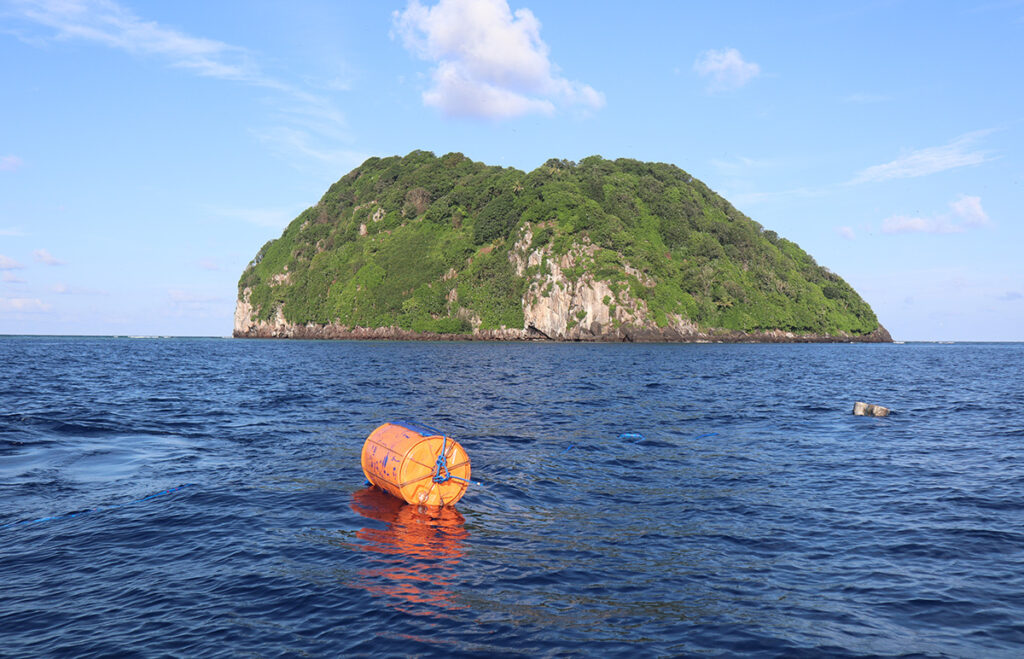
Looking ahead, EcoNusa aims to install mooring buoys at a total of 21 strategic points at depths ranging from 150 to 200 meters. A fair and sustainable management system is being designed. Each boat that docks using a mooring will be charged a fee regulated through village policies—allowing villages and communities to benefit economically from each mooring installed.
The sea is a source of life. Protecting the Banda Sea is not only about environmental conservation but also about sustaining the cultural and economic heritage of coastal communities. Through the installation of mooring buoys, Banda is shaping a more responsible tourism future—one that not only pleases the eye but also preserves nature for the next generation.


